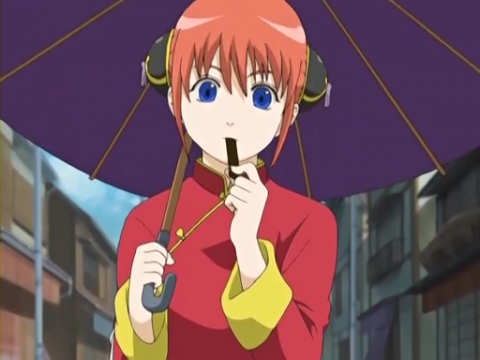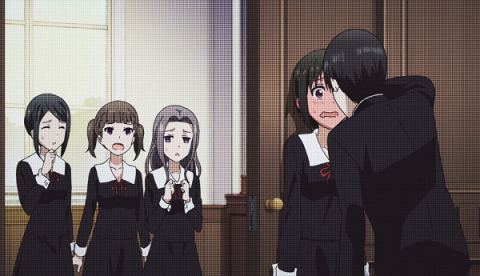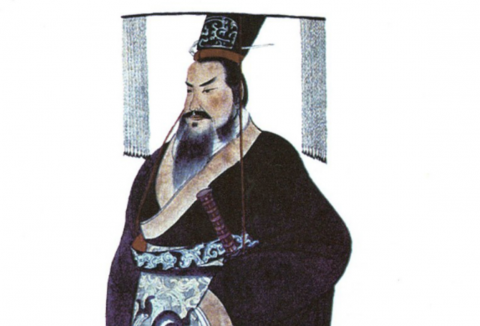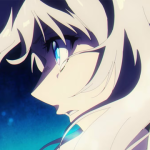This work became famous through anime and manga, but it was originally a computer game by the doujin group "07th Expansion." It is a sound novel, and was directed and written by Ryukishi07. The game, manga, and anime are all divided into a question section and an answer section, and are structured so that you cannot grasp the whole picture of the work unless you play and read both. The official title is "Higurashi When They Cry," with the "na" in red, and the "C" in the English title "When They Cry" is written in red. The content is cruel and thrilling, which is hard to imagine from the cute characters, and it is also an excellent horror work. There are four anime series in total, but only the second season was broadcast as a TV anime, and the remaining three and four seasons were released on DVD and Blu-ray as OVAs. This time, I would like to explain the content of the third season. First season: "Higurashi When They Cry" April to September 2006, second season: "Higurashi When They Cry Kai" July to December 2007
The basic structure is that the first season is the question section and the second season is the answer section.
"Higurashi When They Cry Rei" (third season)
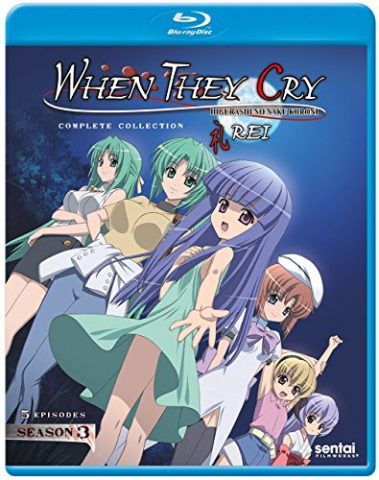
It consists of three parts and five episodes: "Shameful Exposure Arc", "Sai-Koroshi Arc", and "Hiru-Kusashi Arc", and was sold from February to September 2009.
The first episode includes the "Shameful Exposure Arc" that was featured in the bonus booklet of the first limited edition "Take Home Set" of the PS2 game "Higurashi no Naku Koro ni Matsuri," but does not include the "Tsumi Koi shi Arc" from the original work.
Even though the titles are the same, the original work "Higurashi no Naku Koro ni Rei" and the anime "Higurashi no Naku Koro ni Rei" have slightly different contents. Only the "Saigoroshi Arc," which is the main part of the third season, consists of three episodes.
Episode 1 "Shameful Exposure"
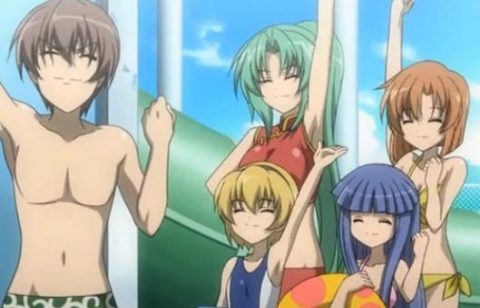
This is an animated version of the short story that was a first-time bonus for "Higurashi no Naku Koro ni Matsuri," and is a work full of service footage for Higurashi fans.
The story begins when Keiichi, who forgot his swim trunks on the way to the pool for club activities, borrows a pair of cursed swim trunks from an old man at a toy store.
These swim trunks... are special ones that make you popular when you wear them?! ...
Sexy Teacher Rumiko
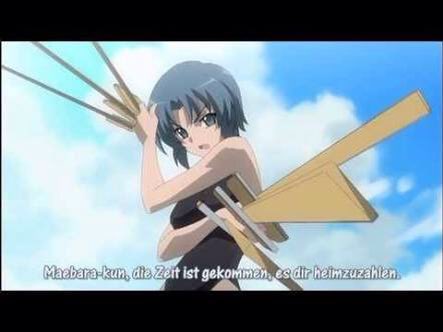
Chie Rumiko, voiced by Fumiko Orikasa, is a teacher at Keiichi's school, and doesn't appear in many scenes in the main story.
Unlike her usual summer dresses, she shows off a rare swimsuit in the "Shurisha-hen" episode.
Sexy swimsuits are attractive, but these ordinary swimsuits on beautiful women are also lovely.
Episodes 2 to 4 "Saikoroshi-hen"
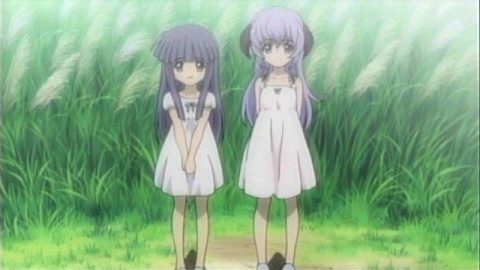
The story takes place in August 1983 in Hinamizawa, after the "Matsuribayashi-hen". This part will clear up all the puzzling parts of Higurashi so far.
It is positioned as a TRUE END and also serves as a prequel to "Umineko no Naku Koro ni".
Furude Rika was involved in a traffic accident on her way home from a gaming tournament, and when she woke up, she was in a bed in the school nurse's office.
Seeing the formal Satoko and Satoshi before he developed Hinamizawa Syndrome, Rika is disheartened, wondering if this will happen again.
However, there are many obvious differences from the previous world, and what is even more conclusive is the calendar for "June 1983".
In this world, there is no "sin" that has caused so many tragedies up until now. Rika's parents are alive, Takano Hifumi's research has borne fruit, and Hinamizawa Syndrome has been eradicated.
Furthermore, the relationship between the Sonozaki and Hojo families in Hinamizawa is good, and everyone lives together, holding hands. The club members are also all "sinless" and are living different lives than before.
What on earth is this world...?! Rika gets in contact with Hanyuu and begins to investigate this world.
A relationship between Rika and Satoko that has never existed before...
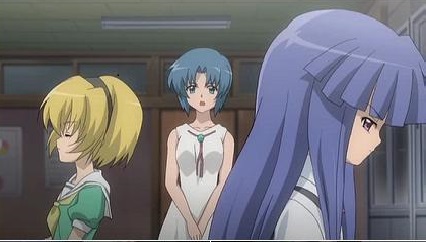
In this world without "sin," the Hojo family is not ostracized, and the relationship between Satoko and her father is good thanks to the efforts of both parties.
Therefore, Satoshi does not need to worry about Satoko, and he does not develop Hinamizawa Syndrome. He does not disappear, and he is by Satoko's side, so Satoko lives as a normal girl.
In the first place, Rika wanted to help Satoko because she was in a similar situation to her, so she became friends with her, but she could not sympathize with Satoko in this world, so the two cannot be called friends.
Episode 5 "Day Break"
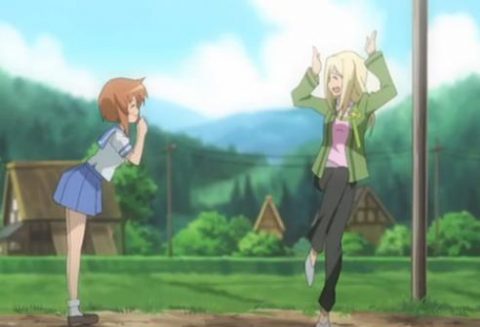
This part is based on the world view of the 3D fighting action game "Higurashi Daybreak". (Day = day, Break = break)
Keiichi and Rena go treasure hunting in a garbage dump. Suddenly, a "magatama" falls from the sky. Rena swallows the "magatama", but there is nothing wrong with her and she returns home.
This "magatama" is actually the treasure of Furude Shrine, "Fuwarazu no Magatama", and Rena goes berserk after swallowing it.
Like the "Shameful" arc, this part has a strong comedy element. There are so many parodies that it may be difficult to find them all.
Satoko receives a supersonic punch
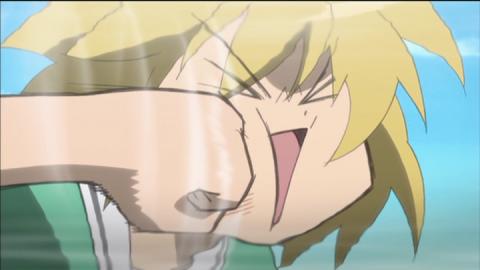
Satoko interrupts Rena and Takano as they embrace...
She falls victim to Rena's supersonic punch. She is blown away and injured,
but she doesn't give up and persuades Takano to return the magatama. It's a wonderful scene where you can see the brave and cute Satoko.
Even so, Rena's punching power is fearsome, blowing someone away with a punch from that distance...
Summary of explanations about the third season OVA version that was not in the TV anime version

The first and second stories of the anime "Higurashi When They Cry" are sub-stories, and are typical of OVAs.
The main story, "Saikoroshi-hen", is also the true final chapter, and is a work that you should definitely watch. Why didn't they broadcast the TV anime version... (tears)
By the way, "Saikoroshi-hen" is pronounced "Saikoroshi-hen", not "Saigoroshi-hen".

